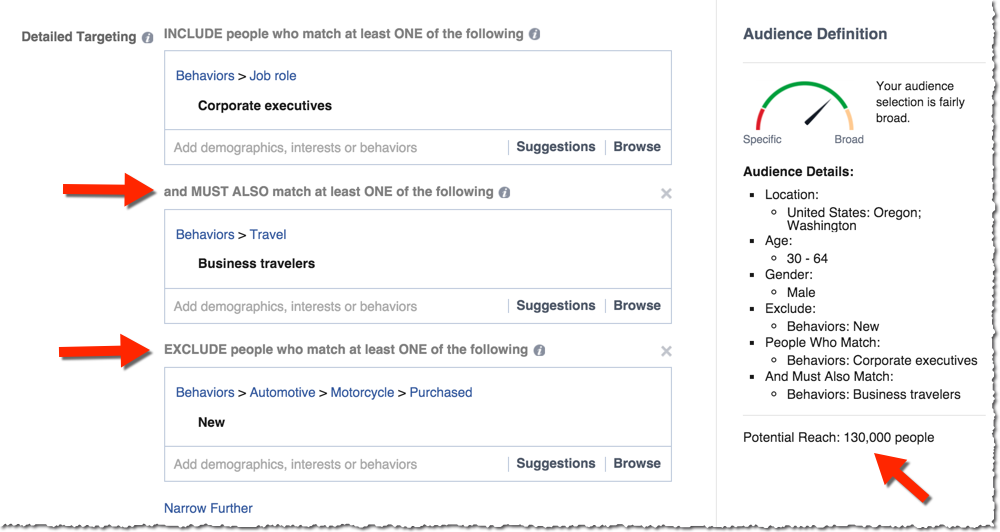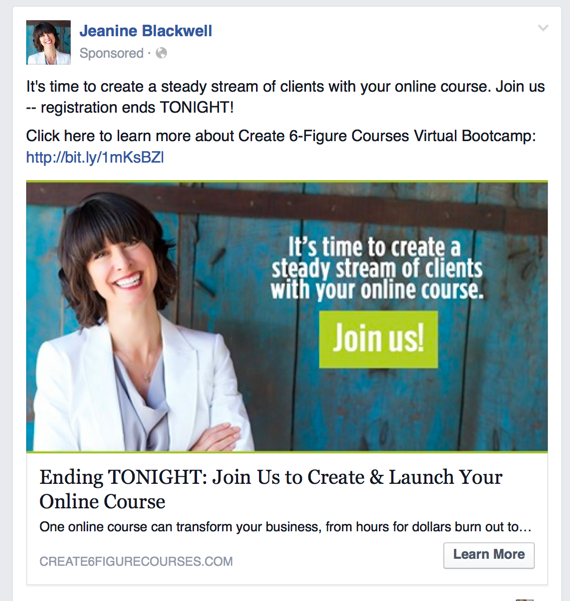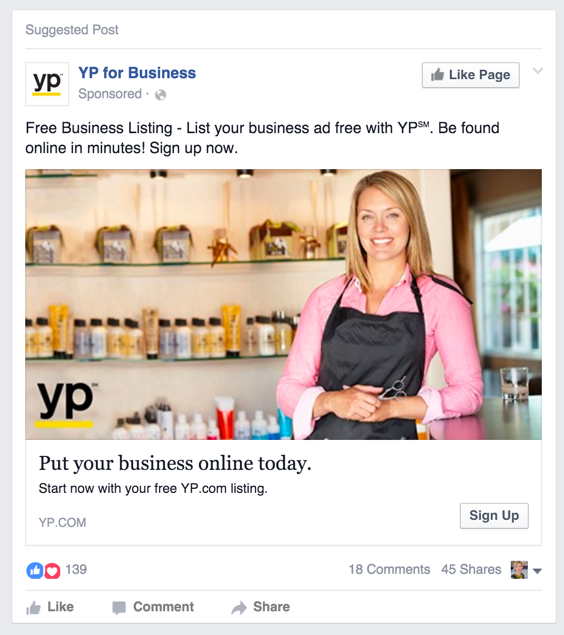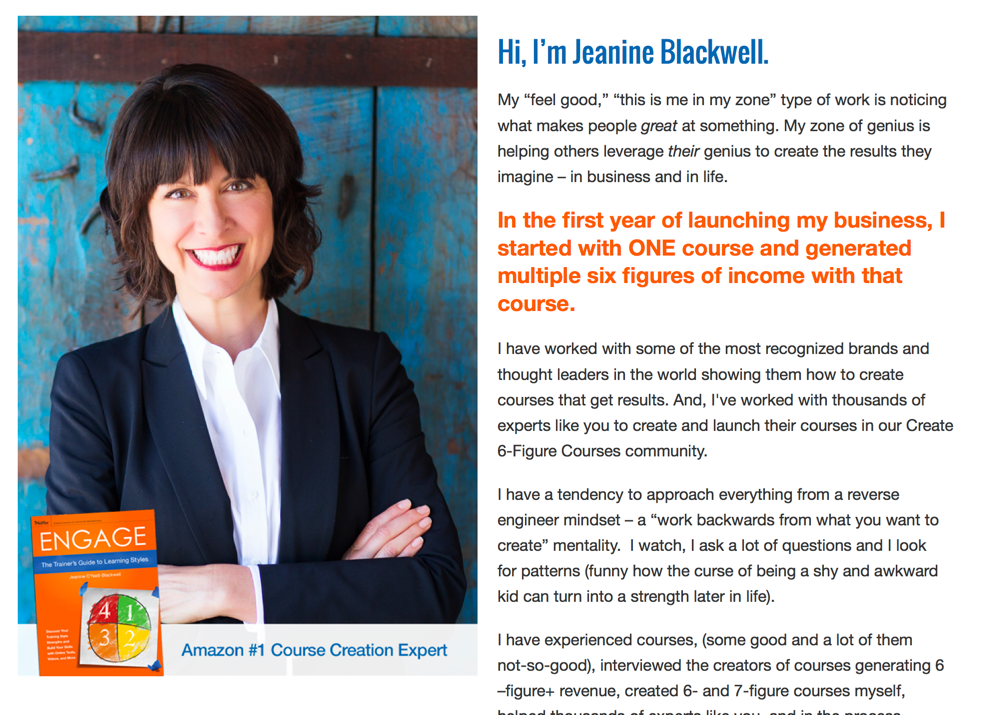Facebook ads are the most targeted traffic your money can buy. Period.
There is no other platform out there with 1.6 billion active users that offers the depth of granular targeting than Facebook. And now Instagram, too.
However, every day, I hear of marketers who end up frustrated and confused when it comes to actually generating positive, measurable results from their Facebook advertising efforts.
In this post, I’ll demystify why exactly there is so much frustration and confusion out there, and help you understand what even a few critical tweaks will make to your results.
Related Article: 20 Facebook Tools for Marketing Optimization
1. Your Target Audience Is Not Properly Defined
There is a common misconception that if you can reach millions of people, why wouldn’t you? Well, frankly, your Facebook ads will be nowhere near as effective when you attempt to reach this many people.
Far better to refine and define using what is called flex targeting.
Using this feature, you can really clearly specify the target demographics, interests, and behaviors that you want to include as well as exclude.
For example, let’s say you’re looking to advertise an awesome new motorcycle to men in Oregon and Washington State.
And, you know your typical target audience tends to be Corporate Executives and they travel on business.
However, you also wish to exclude the audience that has purchased a new motorcycle.

Voila! We end up with an audience of 130,000 potential reach, which is right in the sweet spot. (Note: some of the target behaviors may not be available to all countries, but are coming soon.)
By the way, on any ad, desktop or mobile, you can check to see why you are being targeted.
Of course, to protect the advertisers, Facebook reveals just one element, not the full range of targeting.
To access this info on any ad, just click or tap the little gray down arrow and then select ‘Why am I seeing this?’
As part of your own research, I encourage you to get into the habit of looking at this information on ads you see in your Facebook News Feed.
It’s amazing how many savvy advertisers use Lookalike Audiences. You may also see when an advertiser targets their competition, which is always informative.
And, it’s amazing how many advertisers I see that say they’ve added me to a list, when I know for sure I didn’t opt in to their list, nor visit their website.
2. Your Ads Need to Be More Visually Appealing
Our brains can process images in 13 milliseconds. There is a reason Facebook and Instagram are so popular with visual content.
And, there is a reason why Facebook has a rule about having no more than 20 percent text on your images for paid promotions: we don’t want the news feed to look too much like advertised content.

So, to that end, utilizing more visually appealing images in your paid promotions can help increase at least your engagement and click-throughs.
This helpful article on Nanigans goes into detail about using more color for eye-popping Facebook ads.
Plus, a wonderful study of 100,000 Facebook ads by my friends at Consumer Acquisition found that pictures of everyday women work really well in ads.
Not perfect model, ‘photoshopped’ women. But regular everyday women that you would see in your News Feed shared by friends anyway.
3. Your Ads Are Too Interruptive
For the longest time, I’ve said that success on Facebook is a result of first thinking and acting like a member first, and then a business second. In other words, when people are on Facebook, they are in social mode.
For the most part, users access Facebook during their spare time, outside of work.
Users are scrolling through their News Feed, viewing as many as 300 stories in a day mostly from friends, people they follow, groups to which they belong, and some pages they’ve liked.
The content that catches a users eye is personal, human, and real.
As soon as a paid story shows in the News Feed, think about it. The context is very personal and social.
Your ad is now competing for attention among photos of babies, cats, food, and fun personal videos.
On Facebook's Q4 2014 earnings call, Mark Zuckerberg stated that the company's goal is to reach a point where the ads are, "as relevant and timely as the content your friends share with you."
Here’s an example ad by Yellow Pages YP.com that shows what looks like a real local businesswoman, possibly a hair salon owner.
Would one of your real Facebook friends post a picture similar to this? Possibly. It’s certainly more appealing than an image of a big logo, for example.

Think about how your ads can have more of an authentic, human look and feel.
4. Your Landing Page Is Incongruent With Your Ad
Finally, imagine you’ve done your homework: you have the perfect targeting, appealing visuals, humanized message, and compelling ad copy, of course.
You’ve piqued the exact target market’s interest. They see your ad and click/tap on it.
Now, they are on your website. Uh oh! But there is a big disconnect. The image in the ad is not on the website landing page.
There are too many extraneous buttons and links to click on. The message is not clear. The call to action is not clear. The color scheme and branding is different.
The page/website is not mobile friendly and takes a long time to load. A giant popup comes up immediately and is hard to click off, especially on mobile.
All these possible disconnects are reasons why your coveted target visitor will quickly leave your landing page and not take the action you wanted them to.
Such as, sign up with their email address, or RSVP for an event, or make a purchase.
Related Article: Reach Your Community: 5 Ways To Use Facebook Ads For Local Advertising
The concept of ensuring your ad is completely congruent with exactly what your prospect expects is called "Frame of Mind" marketing.
This term was coined by, Maria Veloso, a very talented copywriter and marketing expert and author of, Web Copy That Sells.
I first came across Maria’s term around 2003 when I wrote my first ebook on email marketing best practices.
By way of example, for the ad image we used in #2 above, here is a clip of the attractive landing page for Jeanine’s offer, where she uses a similar image and bright colors:

To increase your ad conversions, you have to manage the prospect’s expectations.